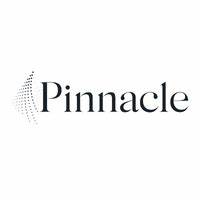Dani Saurymper and Julia Varesko discuss the first half of 2022 and outlook for the rest of the year
As we pass the halfway mark of 2022, global equities are down 12% in GBP, with Q2 offering no respite. Market volatility remains elevated with ongoing geopolitical concerns, central banks hiking interest rates, inflation printing new highs and weakness in the economy weighing on sentiment. Globally, analysts have been putting through more downgrades than upgrade revisions, however actual earnings estimates in the US and Europe have yet to be revised lower. Looking ahead, there is hope that commodity prices have started to retrace, equity valuations have dropped sharply (albeit not at recession type multiples) and Bullish Sentiment (www.aaii.com) is at a 30+ year low, with many anticipating a weak Q2 reporting season.
Going forward, we expect the Social pillar of ESG to become more prominent in driving sustainable stock returns and corporate sustainability strategies as labour market remains tight and human capital management, through talent attraction and retention, increasingly becomes a point of differentiation. This may come at the expense of the Environmental pillar of ESG which the vast majority of Growth and SRI focused funds have enthusiastically pursued. The objective of the fund is to deliver long-term capital growth and our investment philosophy is tilted towards quality growth at a reasonable price. We see the strong outperformance delivered relative to Growth and SRI indices as evidence that Quality and Growth can deliver even when it is out of favour relative to value.

With the rally in energy and commodities beginning to fade we believe we are entering the early contraction phase of the business cycle and expect Healthcare along with Consumer Staples to outperform. We see Healthcare as one of the few equity segments offering earnings stability and capital return at an appealing valuation. The Longevity & Social Change fund has over 50% of its assets invested in Healthcare, much of which offers; 1) defensive growth (inelastic demand/secular growth through periods of uncertainty); 2) high margins (typically insulated from inflation given agriculture and energy are not significant inputs); and 3) pricing power at undemanding valuations relative to expected growth.
Healthcare has experienced secular growth for several decades due to favourable demographics (ageing and growing middle-class population) and breakthrough innovation. In the US alone, Healthcare expenditures have risen to 16% of total personal consumption wallet from 5% since the 1950s, while Food & Beverages has declined to 8% from 21%. This has translated to Healthcare generating the strongest revenue growth of all sectors since the GFC of 9.0% CAGR (vs. 4.4% S&P 500) and long-term growth rate of 10.6% CAGR (vs. 4.0% S&P 500 since 1994). (source: JP Morgan, 2022).
While rising energy and inflation costs could pose a threat to healthcare spending in the short term, demographic trends, excess savings, and rising wages all suggest otherwise. Based on consensus estimates, Healthcare is expected to continue generating healthy mid-single-digit revenue growth while enjoying tech-like margins. Most Healthcare sub-industries earn margins north of 20% given patent protection and scale, while Biotech (38%) and Pharma (30%) generate among the strongest margins of all S&P 500 industries (in line with or higher than scalable Software and Internet Services). While drug pricing and Healthcare margins are often a target of political rhetoric during elections, we anticipate the upcoming midterm elections should be a positive for the sector if Democrats lose the House, hindering the Biden administrations’ ability to pass new legislation.
To read the full article, please click here.



